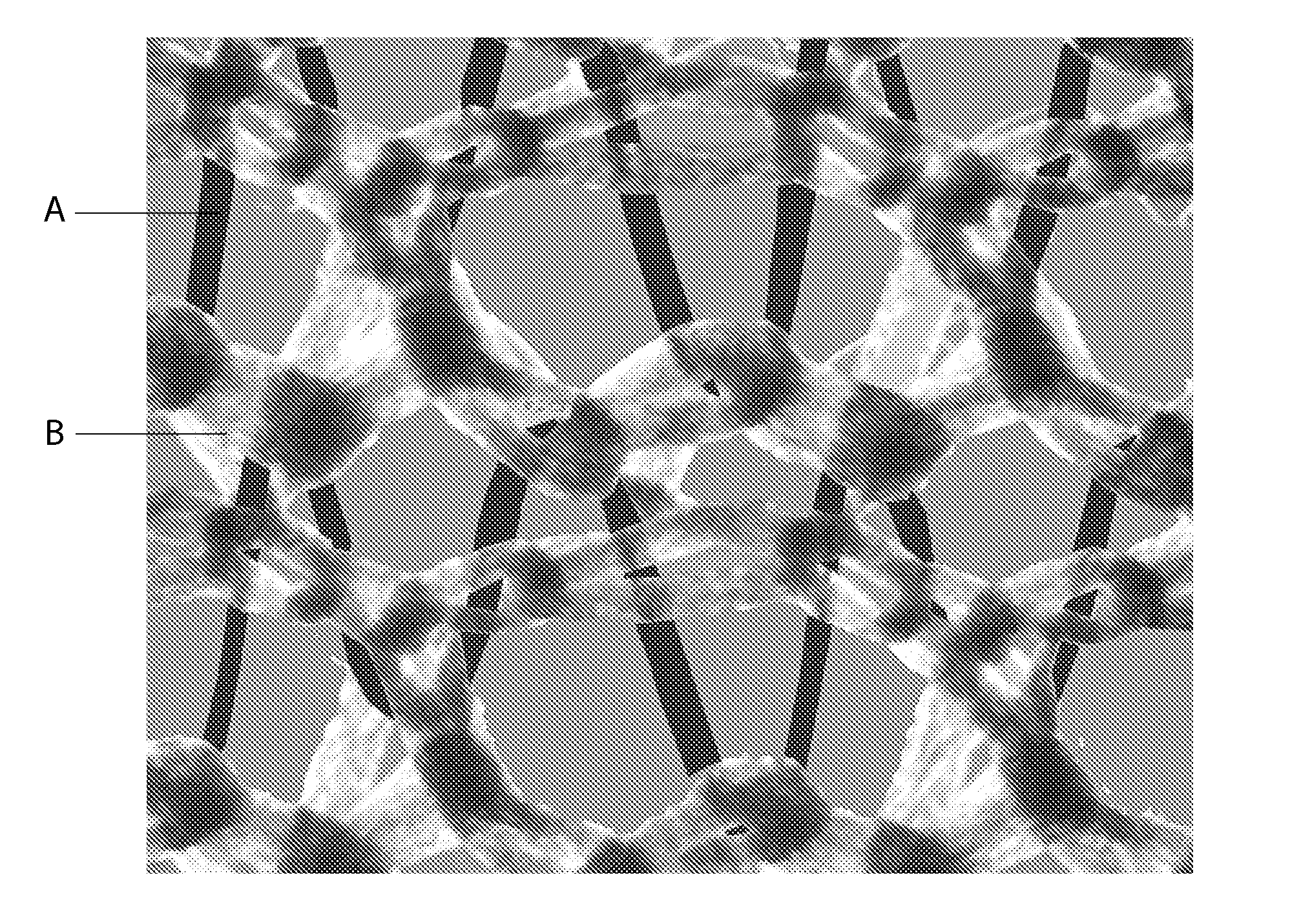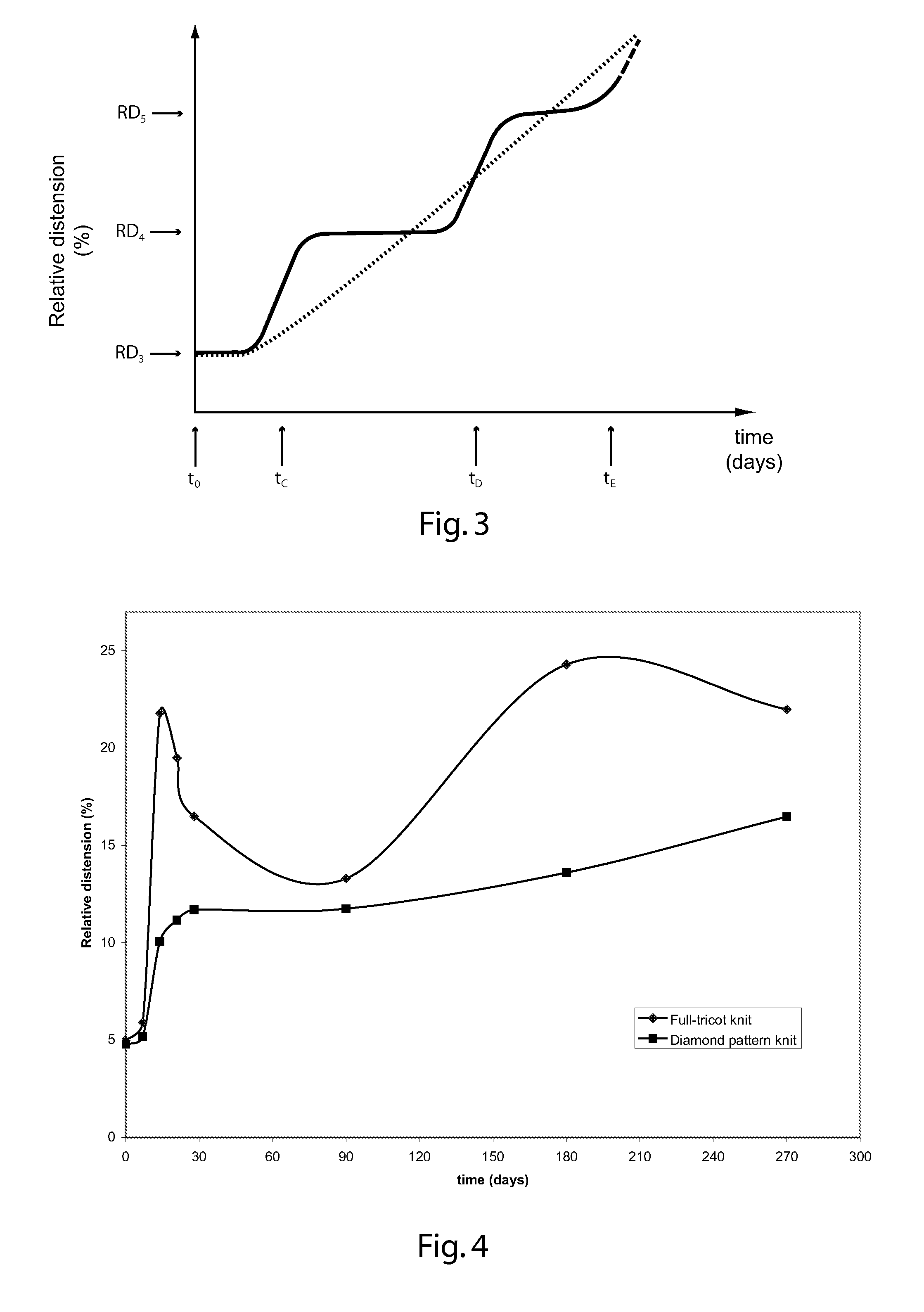Mesh implant with an interlocking knitted structure
a polymer mesh and knitted structure technology, applied in the field of resorbable polymeric mesh implants with interlocking knitted structures, can solve the problems of permanent introduction of foreign materials into the human or animal body, side effects of foreign material introduction, migration, and risk of infection, and achieve the effects of promoting proper healing of tissue lesion, constant low relative distension, and relative distension
- Summary
- Abstract
- Description
- Claims
- Application Information
AI Technical Summary
Benefits of technology
Problems solved by technology
Method used
Image
Examples
example 1
[0036]The overall distension of the inventive mesh implant at 16 N / cm (see K. Junge et al.: Elasticity of the anterior abdominal wall and impact for reparation of incisional hernias using mesh implants. Hernia 2001, no. 5, p. 113-118) for the ball burst testing apparatus was determined using the ASTM D3787-01 guideline for the fixture geometry (25.4 mm polished steel ball, 44.45 mm diameter inside opening). Two different meshes, knitted together in two different interlocking patterns, diamond pattern and full-tricot, were tested. Both meshes were composed of the same two types of fibers. The fast degrading fiber (40% by weight) was a tri-axial copolymer having a soft core and crystalline arms composed of 86% glycolide, the rest being trimethylenecarbonate and lactide. The slow degrading fiber (60% by weight) was a linear copolymer having a soft core and crystalline arms composed of 91.5% lactide, the rest being trimethylene carbonate. The area weight of each mesh was approximately 1...
PUM
 Login to View More
Login to View More Abstract
Description
Claims
Application Information
 Login to View More
Login to View More - R&D
- Intellectual Property
- Life Sciences
- Materials
- Tech Scout
- Unparalleled Data Quality
- Higher Quality Content
- 60% Fewer Hallucinations
Browse by: Latest US Patents, China's latest patents, Technical Efficacy Thesaurus, Application Domain, Technology Topic, Popular Technical Reports.
© 2025 PatSnap. All rights reserved.Legal|Privacy policy|Modern Slavery Act Transparency Statement|Sitemap|About US| Contact US: help@patsnap.com



